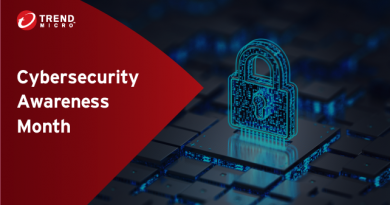Guide to Operationalizing Zero Trust

Overcoming barriers
Operationalizing Zero Trust presents several technological challenges, including integrating legacy systems not designed for Zero Trust, navigating the complexity of implementation, and ensuring cohesive integration between security technologies.
Financially, the transition can involve high initial costs and ongoing maintenance, updates, and training expenses. Human challenges such as employee resistance to change, lack of understanding or training, and increased security responsibility can also slow adoption.
Despite this, the benefits of Zero Trust—particularly in terms of improved security and risk management—often make it a worthwhile investment. Interoperability with SWG, CASB, and ZTNA and includes Attack Surface Management and XDR within a single platform, for example, can reduce the burden on IT teams and provide a single source of truth for risk assessment within your current security stack, including third-party integrations and APIs.
Careful planning, securing buy-in from key stakeholders, providing adequate training, and investing in compatible technologies can help you successfully navigate these challenges and operationalize Zero Trust effectively.
Risk management strategies and planning
To ensure a successful transition to a Zero Trust architecture, you can employ several risk management strategies and planning methods. These strategies include assessing legacy systems, investing in interoperable solutions, and taking a phased implementation approach.
Financial mitigation strategies include conducting a cost-benefit analysis and planning for Zero Trust transition costs in your IT budget. In addition, address the human element by engaging your stakeholders through training and education programs and fostering a security-conscious culture.
Monitoring and Improving Zero Trust Over Time
Tracking key performance indicators (KPIs) and metrics is crucial to assess the efficacy of your Zero Trust security approach.
Here are some critical metrics that demand your attention: Mean Time to Detect (MTTD), Mean Time to Respond (MTTR), Incident Rate, Access Control Compliance, User Behavior Anomalies, Authentication Failures, Privilege Escalation Incidents, Patch Management Compliance, Employee Training Compliance, and User Satisfaction.
By monitoring these metrics, you can make data-driven decisions and adjust your strategy to ensure your Zero Trust model is effective and continually improving.
Building a Business Case for Zero Trust
Zero Trust assumes all users, devices, and applications pose a potential threat unless proven otherwise. This multi-dimensional approach to cybersecurity ensures a more robust defense by treating each access request as a potential threat, helping you mitigate risks, decrease the attack surface, and prevent unauthorized access.
As cyber threats continue to escalate, incorporating Zero Trust measures is an effective way to enhance business objectives and bolster digital transformation endeavors. Zero Trust eliminates the traditional network perimeter, enabling seamless and secure remote work. Additionally, it facilitates fast cloud adoption and the secure integration of IoT devices, enhancing operations and customer experiences.
By aligning with Zero Trust best practices, organizations can accelerate their cybersecurity maturity and build a stronger and more resilient security posture. This approach effectively closes security gaps and proactively meets regulatory and compliance requirements such as GDPR, HIPAA, or PCI-DSS, ultimately leading to a more secure and robust digital environment and demonstrating to customers, partners, shareholders and insurers that your organization is well-prepared to manage cyber risk.
Trend Vision One is also interoperable with SWG, CASB, and ZTNA and includes Attack Surface Management and XDR within a single console.
Regardless of where you are in your Zero Trust journey, Trend Micro’s broad and constantly growing relationships with IAM, firewall, BAS, and SIEM/SOAR vendors provide a single source of truth for risk assessment within your current security stack, including third-party integrations and APIs. In-app guidance, education, and intuitive UI experience are built in to help you operationalize Zero Trust in your environment.
Conclusion
The benefits of operationalizing Zero Trust are far-reaching – from bolstering cybersecurity defenses to enhancing productivity. As a CISO, it is essential to spearhead this shift by fostering a culture of security and making strategic decisions.
Partnering with an experienced solution provider like Trend Micro can significantly support this endeavor by providing robust security solutions that integrate seamlessly with Zero Trust architecture. This ensures that Zero Trust becomes a core component of operational resilience and business success.
Read More HERE




